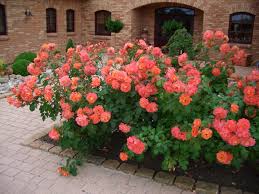Tips for Beautiful Roses

Climbing Rose varieties
The reward for gaining and applying the relevant knowledge about rose gardening is big, beautiful rose bushes, laden with colourful and fragrant roses. Here we will help you learn all about pruning roses, preparing rose beds, types of roses and the best way to look after them.
The types of rose bushes you can choose from are; Shrub Roses, Miniature Roses, Climber, Grandiflora, Floribunda and Rugosa. Be aware that some of these are quite hardy while others can be sensitive, so be sure to choose wisely and buy ones that are suited to your garden and lifestyle.
Caring for Your Roses
Caring for rose bushes is vital to their general health and vigour, as well as their appearance, below are some helpful guides.
Planting
Plant roses where they will collect a minimum of 5 to 6 hours of full sun per day. Roses grown in weak sun may not die at once, but they weaken progressively. Give them plenty of organic matter when planting and don’t crowd them.
Wear sturdy gloves to shield your hands from prickly thorns and have a hose or bucket of water and all your planting utensils nearby. Keep your bare-root rose in water until you are ready to place it in the ground.

Minature Rose varieties
Roses can be cut back and moved in either spring or winter, definitely not in summer, as they may suffer and die in the high temperature. Large rose canes can be cut back by as much as two thirds, and smaller ones to within 6 to 12 inches of the ground.
When you relocate your roses, be sure to dig a much bigger hole than you think you need (for most types, the planting hole should be about 15 to 18 inches wide) and add plenty of organic matter such as compost or aged manure.
Watering
Roses require at least an inch of water weekly throughout their growing season, beginning in spring or following spring planting. Rose bushes are very prone to fungal diseases, such as black spot and powdery mildew, especially when their foliage is kept too wet.
Attentively water your roses, ensure that you soak the entire root zone at least twice a week in dry weather. Elude frequent shallow sprinklings, which won’t reach the deeper roots and may encourage fungus. Roses do best with 90 inches of rain per year, so unless you live in a rain forest, water regularly, although If adequate drainage is not provided, they can easily drown. The ideal soil is rich and loose, with good drainage. One of the worst mistakes you can make is to not provide adequate drainage.
Use mulch to help save water, decrease stress, and encourage healthy growth, apply a 2 to 4 inch layer of chopped and shredded leaves, grass clippings, or shredded bark around the base of your roses. Allow about an inch of space between the mulch and the base stem of the plant.

Florabunda Roses “French Lace Rose”
Feeding
Feed roses on a regular basis before and throughout the blooming cycle (avoid chemical fertilizers and pesticides if you’re harvesting for the kitchen), a slow releasing fertilizer is best or apply a balanced granular fertilizer (5-10-5 or 5-10-10) minimum of once a month during the hotter months. Allow ¾ to 1 cup for each bush, and sprinkle it around the drip line, not against the stem. Also apply an additional tablespoon of Epsom salts along with your fertilizer; the magnesium sulphate will encourage new growth from the bottom of the bush.
Pruning
Prune roses every spring and terminate all old or diseased plant material. Start with pruning shears for smaller growth. Use loppers, (the bigger, long-handle shears) for growth that is more than half an inch thick. A small pruning saw is handy, as it cuts on both the push and the pull.
Deadhead religiously and keep beds clean. Every leaf has a growth bud, so removing old flower blossoms encourages the plant to make more flowers instead of using the energy to make seeds. Clean away from around the base of the rosebushes as any trimmed debris that can harbor disease and insects. Stop deadheading all your rose plants 3 to 4 weeks before winter so

Grandiflora Roses
as not to encourage new growth at a time when new shoots may be damaged by the cold.
Preparing Your Roses for Winter
Do not prune roses in the winter, simply cut off any dead or diseased canes. Stop fertilizing 6 weeks prior to winter but continue watering during dry weather to help keep plants fortified. Mulch or add compost before the weather turns too cold. Compost, mulch, dry wood chips or chopped leaves are all good for insulating your rose beds.
Pests and Diseases
Good gardening practices such as removing dead leaves and canes will help reduce pests. Find out which pests are most prevalent in your area by checking with your local nursery. Here are some of the more common problems:
- Stem Borers
- Japanese Beetles
- Aphids
- Black Spot/Powdery Mildew
- Spider Mites
Roses are a delectable treat for pests so try planting lavender near your roses. Not only will you have the makings of a nice potpourri, but the scent of lavender discourages most pests.

Rugosa Roses
Fun Fact
Rugosa roses are overloaded with vitamins and used for jams, jellies, syrups, pies, teas, and wine. The petals can be tossed into salads for colour, utilized to decorate cakes, or distilled to make rose water.
For expert assistance with pruning your precious roses, or any other gardening maintenance, please contact Jim’s Mowing on 0800 454 654 or book online today!

Shrub Rose Display


